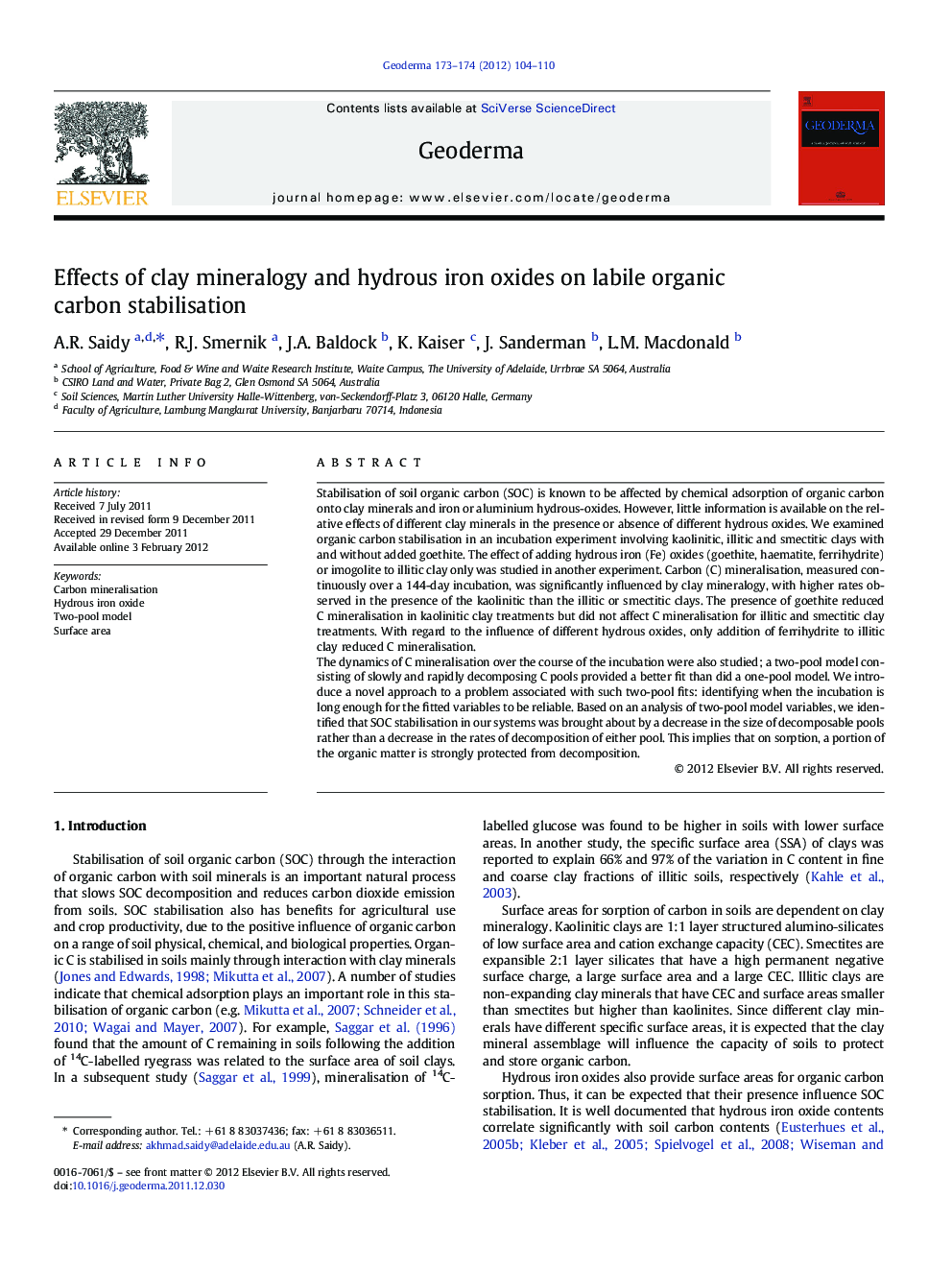| کد مقاله | کد نشریه | سال انتشار | مقاله انگلیسی | نسخه تمام متن |
|---|---|---|---|---|
| 4573939 | 1629501 | 2012 | 7 صفحه PDF | دانلود رایگان |

Stabilisation of soil organic carbon (SOC) is known to be affected by chemical adsorption of organic carbon onto clay minerals and iron or aluminium hydrous-oxides. However, little information is available on the relative effects of different clay minerals in the presence or absence of different hydrous oxides. We examined organic carbon stabilisation in an incubation experiment involving kaolinitic, illitic and smectitic clays with and without added goethite. The effect of adding hydrous iron (Fe) oxides (goethite, haematite, ferrihydrite) or imogolite to illitic clay only was studied in another experiment. Carbon (C) mineralisation, measured continuously over a 144-day incubation, was significantly influenced by clay mineralogy, with higher rates observed in the presence of the kaolinitic than the illitic or smectitic clays. The presence of goethite reduced C mineralisation in kaolinitic clay treatments but did not affect C mineralisation for illitic and smectitic clay treatments. With regard to the influence of different hydrous oxides, only addition of ferrihydrite to illitic clay reduced C mineralisation.The dynamics of C mineralisation over the course of the incubation were also studied; a two-pool model consisting of slowly and rapidly decomposing C pools provided a better fit than did a one-pool model. We introduce a novel approach to a problem associated with such two-pool fits: identifying when the incubation is long enough for the fitted variables to be reliable. Based on an analysis of two-pool model variables, we identified that SOC stabilisation in our systems was brought about by a decrease in the size of decomposable pools rather than a decrease in the rates of decomposition of either pool. This implies that on sorption, a portion of the organic matter is strongly protected from decomposition.
► Stabilisation of added OM was greatest for smectite and least for kaolinite.
► Addition of goethite increased stabilisation of added OM only for kaolinite.
► Ferrihydrite provided the greatest stabiliation of added OM.
► Incubation time for reliable kinetics of OM mineralisation was identified.
► Carbon stabilisation occurred through a reduction in decomposable C pool sizes.
Journal: Geoderma - Volumes 173–174, March 2012, Pages 104–110